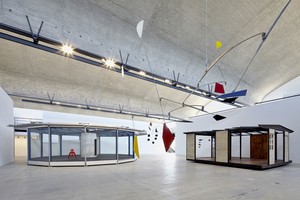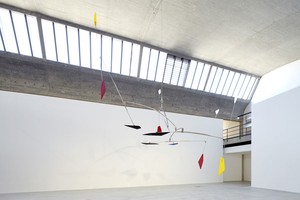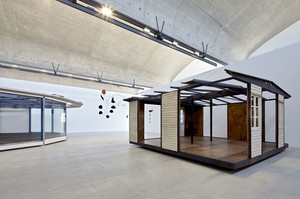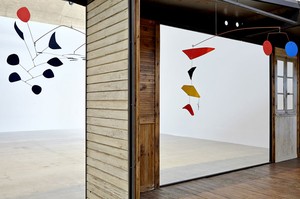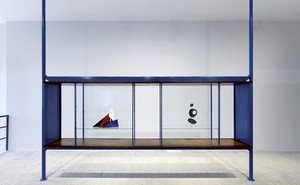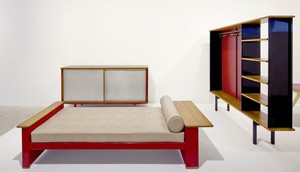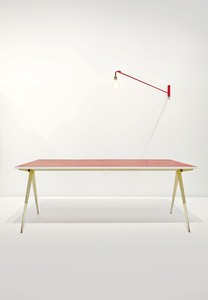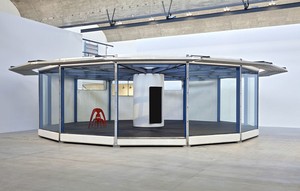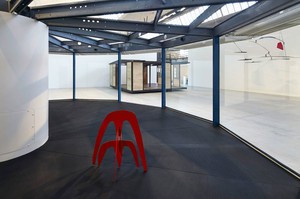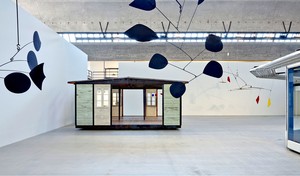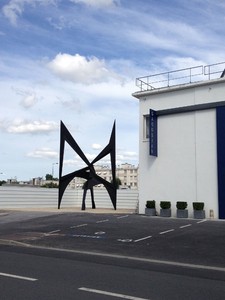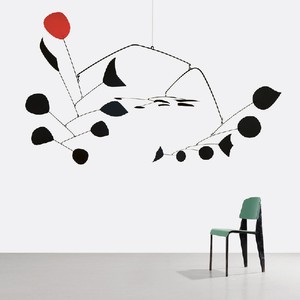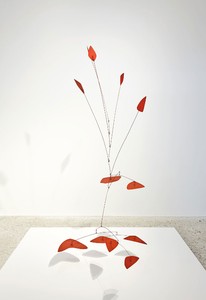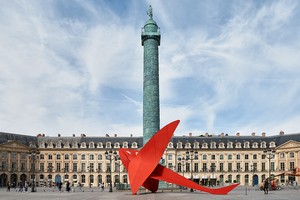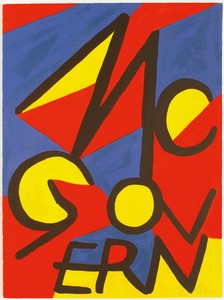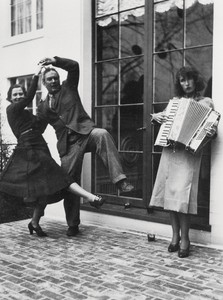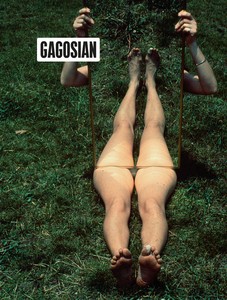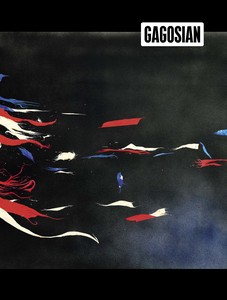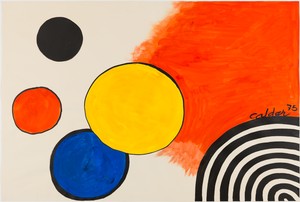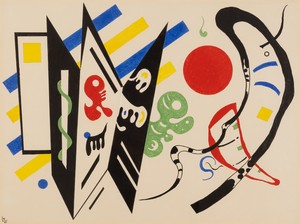The underlying sense of form in my work has been the system of the Universe, or part thereof. . . . What I mean is that the idea of detached bodies floating in space, of different sizes and densities, perhaps of different colors and temperatures, and surrounded and interlarded with wisps of gaseous condition, and some at rest, while others move in peculiar manners, seems to me the ideal source of form.
—Alexander Calder
My creative process imposes from the outset a formative idea that is rigorously realisable. The formative idea is, above all, the understanding of an ensemble as a whole.
—Jean Prouvé
Gagosian, Paris, in collaboration with Galerie Patrick Seguin, is pleased to present an exhibition of works by Alexander Calder and by Jean Prouvé.
Calder’s invention of the mobile (a term that Marcel Duchamp coined to describe these new kinetic sculptures) resonated with both early Conceptual and Constructivist art as well as the language of early abstract painting. Flat, abstract shapes made in steel, boldly painted in a restricted primary palette, black or white, hang in perfect balance from wires. While the latent energy and dynamism of the mobiles remained of primary interest to Calder throughout his life, he also created important standing sculptures, which Jean Arp named “stabiles” to distinguish them from their ethereal kinetic counterparts. These works reject the weight and solidity of sculptural mass, yet displace space in a three-dimensional manner while remaining linear, open, planar, and suggestive of motion.

